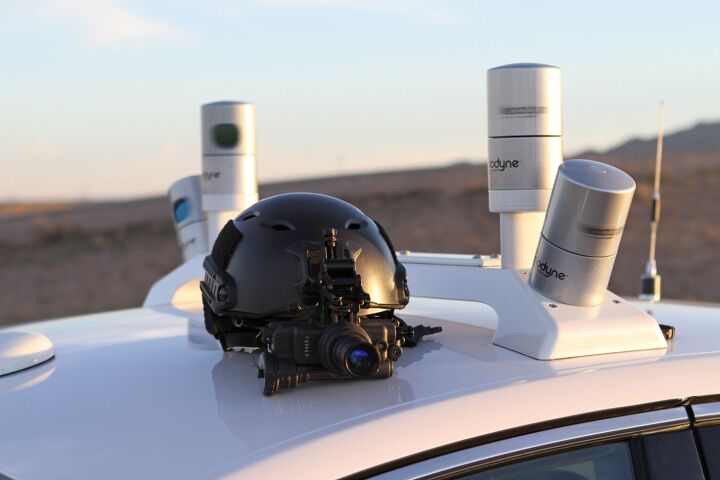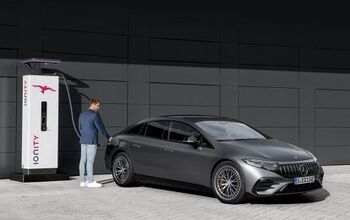House Unanimously Approves Proposal to Deploy Self-driving Cars, and Not Everyone's Happy

On Wednesday, the U.S. House unanimously approved a sweeping proposal to expedite the deployment of self-driving cars and prohibit states from blocking autonomous vehicle testing.
“With this legislation, innovation can flourish without the heavy hand of government,” Ohio Republican Bob Latta said on the House floor leading up to Wednesday’s vote. Latta is chairman of the House Energy and Commerce subcommittee that developed the legislation with support from tech companies and the automotive industry.
One thing missing from the House measure is large trucks, which the Senate hopes to address in its own bipartisan legislation. Congress announced a September 13th hearing to examine the role of autonomous commercial vehicles and how they may fit into the Senate’s pending self-driving legislation. Meanwhile, the House’s bill moves up the board to be put to a vote within the Senate at a later date.
The proposal would allow automakers to obtain exemptions to deploy up to 25,000 vehicles without meeting existing automotive safety standards in the first year. That threshold would eventually rise to 100,000 vehicles annually. The bill also instructs the National Highway Traffic Safety Administration to revise its existing standards to include self-driving cars.
Companies hoping to develop autonomous vehicles are also required to draft security and privacy plans that document their approach for ensuring safe testing, but they do not need regulatory approval to put them on the road. Manufacturers are, however, required to demonstrate self-driving cars are at least as mechanically safe as existing vehicles.
Safety was the word of the day prior to the House vote. Representatives took it upon themselves to remind their colleagues that U.S. road deaths rose 7.7 percent in 2015. However, the largest contributing factor to that statistic was a growing population. Still, the NHTSA cites human error as the primary cause for 94 percent of all crashes — making it the perfect bullet point to cap off the debate.
There was also the matter of keeping America competitive. “If we’re going to stay at the forefront of innovation and technology in this country, we have to be driving the technology for autonomous vehicles,” Michigan Democratic Representative Debbie Dingell stated before the vote. “I’m really proud of the fact that we got this out of the House. We kept our heads down.”
Despite the victory, some Democrats expressed concerns over the lack of input on the bill from the NHTSA — which still lacks any Trump-appointed leadership. Others questioned whether the federal government even had a right to impose these vehicles on individual states, including some consumer advocacy groups.
“The autonomous vehicle bill just passed by the House leaves a wild west without adequate safety protections for consumers. It pre-empts any state safety standards, but there are none at the national level,” the Consumer Watchdog group said in a statement.
According to Reuters, U.S. Transportation Secretary Elaine Chao is expected to unveil revised self-driving guidelines on Tuesday in Ann Arbor, Michigan. The department later confirmed its intentions to showcase the rules sometime next week.
[Image: Ford Motor Company]

A staunch consumer advocate tracking industry trends and regulation. Before joining TTAC, Matt spent a decade working for marketing and research firms based in NYC. Clients included several of the world’s largest automakers, global tire brands, and aftermarket part suppliers. Dissatisfied with the corporate world and resentful of having to wear suits everyday, he pivoted to writing about cars. Since then, that man has become an ardent supporter of the right-to-repair movement, been interviewed on the auto industry by national radio broadcasts, driven more rental cars than anyone ever should, participated in amateur rallying events, and received the requisite minimum training as sanctioned by the SCCA. Handy with a wrench, Matt grew up surrounded by Detroit auto workers and managed to get a pizza delivery job before he was legally eligible. He later found himself driving box trucks through Manhattan, guaranteeing future sympathy for actual truckers. He continues to conduct research pertaining to the automotive sector as an independent contractor and has since moved back to his native Michigan, closer to where the cars are born. A contrarian, Matt claims to prefer understeer — stating that front and all-wheel drive vehicles cater best to his driving style.
More by Matt Posky
Latest Car Reviews
Read moreLatest Product Reviews
Read moreRecent Comments
- SCE to AUX All that lift makes for an easy rollover of your $70k truck.
- SCE to AUX My son cross-shopped the RAV4 and Model Y, then bought the Y. To their surprise, they hated the RAV4.
- SCE to AUX I'm already driving the cheap EV (19 Ioniq EV).$30k MSRP in late 2018, $23k after subsidy at lease (no tax hassle)$549/year insurance$40 in electricity to drive 1000 miles/month66k miles, no range lossAffordable 16" tiresVirtually no maintenance expensesHyundai (for example) has dramatically cut prices on their EVs, so you can get a 361-mile Ioniq 6 in the high 30s right now.But ask me if I'd go to the Subaru brand if one was affordable, and the answer is no.
- David Murilee Martin, These Toyota Vans were absolute garbage. As the labor even basic service cost 400% as much as servicing a VW Vanagon or American minivan. A skilled Toyota tech would take about 2.5 hours just to change the air cleaner. Also they also broke often, as they overheated and warped the engine and boiled the automatic transmission...
- Marcr My wife and I mostly work from home (or use public transit), the kid is grown, and we no longer do road trips of more than 150 miles or so. Our one car mostly gets used for local errands and the occasional airport pickup. The first non-Tesla, non-Mini, non-Fiat, non-Kia/Hyundai, non-GM (I do have my biases) small fun-to-drive hatchback EV with 200+ mile range, instrument display behind the wheel where it belongs and actual knobs for oft-used functions for under $35K will get our money. What we really want is a proper 21st century equivalent of the original Honda Civic. The Volvo EX30 is close and may end up being the compromise choice.


































Comments
Join the conversation
Some people are happy: https://www.cbsnews.com/news/4-ways-crooks-stage-accidents-to-crash-your-car/ (although they'll probably get busted by the telematics)
"One thing missing from the House measure is large trucks, which the Senate hopes to address in its own bipartisan legislation." Hey, I've got an idea: Why don't we build special roads for these large trucks? That way, we could increase the capacity of these vehicles, perhaps even attach a bunch of the trailers together for efficiency, and maybe include metal rails in the roadway that match the track width of the vehicles' wheels! Nah, too crazy...it'd never work.